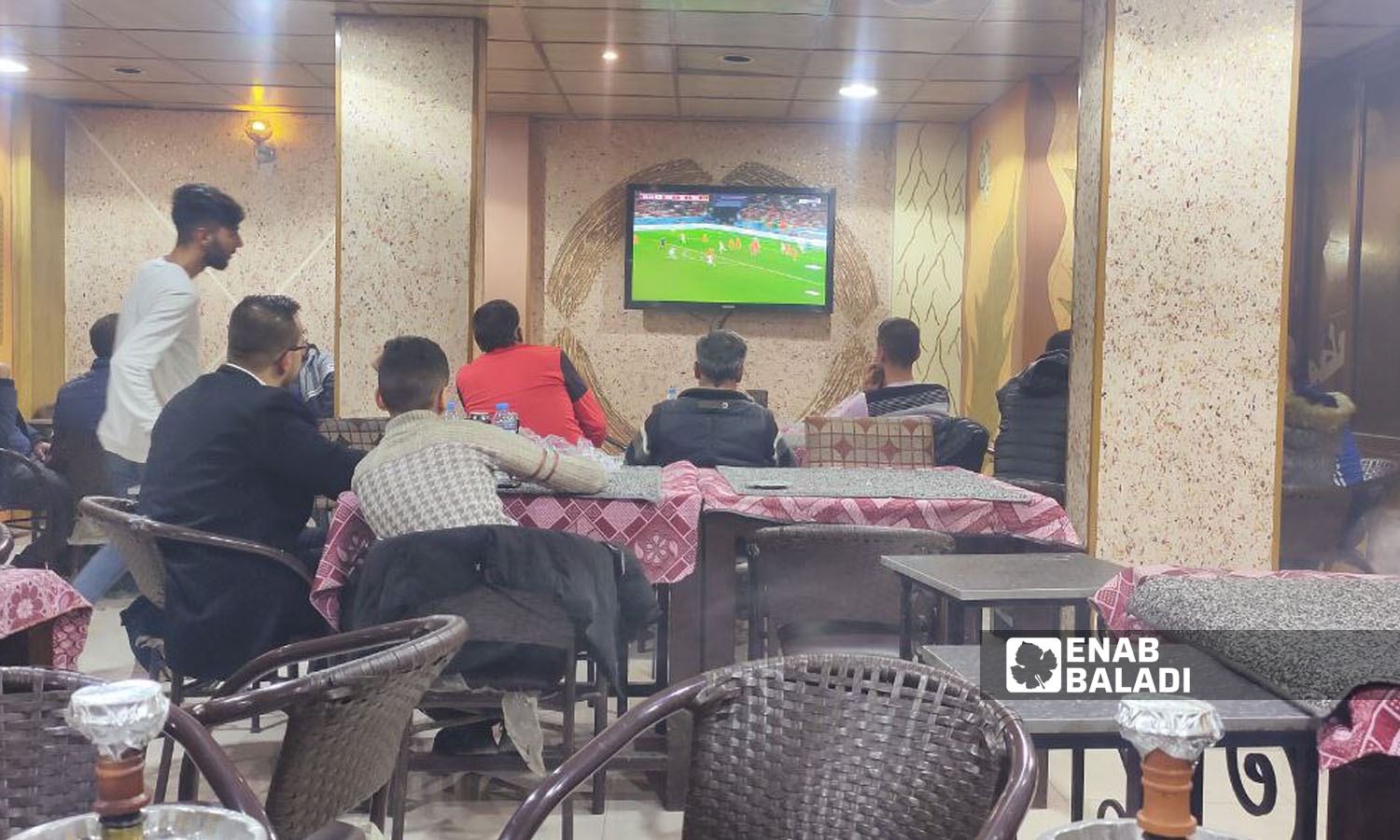



Al-Hasakah – Majd al-Salem
Despite the deteriorating living conditions that the displaced experience in the IDP camp of al-Tuweina in the northeastern al-Hasakah city, the FIFA World Cup Qatar 2022 was a chance to grant a gulp of suspense and cheerfulness for football fans from the camp’s residents that accelerated since 20 November.
The means of watching matches and victory celebrations among the displaced in the camp varied, but the goal was the same, to satisfy the passion and live watching the matches of their favorite teams.
Shihab al-Matar, 25 years, told Enab Baladi that he was lucky to have a smartphone on which he was able to install sports applications allowing him to watch and follow the World Cup events in detail and day by day.
Al-Matar complained about the prices of internet service in the camp, as the cost of 25 GB amounts to about 35,000 Syrian pounds (about 6 US dollars), but he ignored this burden until now, considering that Argentina’s stunning performance “is worth it.”
The camp’s youth relies on sharing the amount of the internet “bill” to watch the matches on one of the smartphones.
Football fans in Syria usually watch the matches through applications and accounts that break the encryption of sports channels that exclusively broadcast the World Cup.
The 31-year-old Louay Suleiman, an IDP of al-Tuweina camp, preferred to watch Qatar’s World Cup in cafes, which set up large screens for the event because the collective watching would make the atmosphere “joyful and festive.”
Suleiman told Enab Baladi that he made an agreement with a group of his friends in the camp to watch the matches in one of al-Hasakah cafes.
Every day, they gather and take a bus from the al-Tuweina camp to al-Hasakah to watch the matches, he added.
The atmosphere of the matches and the enthusiasm of the cheering bring Suleiman and his companions to some extent out of the “misery of the camp,” even for hours, he told Enab Baladi.
He wished all matches would have been scheduled during daylight hours since it was difficult for him to return to the camp at night due to the lack of transportation.
The prices of drinks in cafes, including popular ones, are somewhat expensive for the displaced people coming from the camps, according to Suleiman.
Each person pays between 15,000 and 20,000 SYP to watch the match and to have some drinks during the session.
The interest of the camp residents to attend the matches is increasing day after day, according to what Enab Baladi monitored from the opinions of the residents of some camps scattered north and west of al-Hasakah despite their difficult circumstances, especially with Morocco’s historic victory over Portugal on Saturday, becoming the first-ever Arab and African team to reach World Cup semi-finals.
Some of the displaced in the al-Tuweina camp were not interested in attending the matches during the past years, but the shock victory of Saudi Arabia over Argentina, one of the biggest shocks in World Cup history, and the IDPs’ celebration of it increased the popularity of the “Qatar 2022”.
Also, the availability of television or small screens for some displaced people in their tents or makeshift houses prompted their neighbors to visit them to watch the matches by “pairing” the mobile phone with the TV screen.
This is the most common way to watch matches in the camp, especially since very few of its residents have a subscription to the paid sports channels, and there is more priority than sports, such as securing basic foodstuffs.
With the start of the FIFA World Cup in Qatar, Enab Baladi monitored advertisements published by some shops in al-Hasakah about selling subscriptions to sports channels, through beIN Sports devices or via the Internet.
The cost of installing a device with a signal receiver and a subscription to a sports channel for one year is 27 US dollars, while the cost to renew the subscription at the end of the year is 15 US dollars.
The prices of these services varied between commercial stores, as the price of the device only with a one-year subscription amounted to 30 US dollars, while it was offered in another store at a price of 40 US dollars.
After subscribing, the snag of electricity stands as an obstacle to watching the matches, and it is a problem that has no solutions, according to what Enab Baladi monitored for the opinions of the displaced in the al-Tuweina camp.
The IDP camps of northeastern Syria did not get the initiatives that the northwestern region enjoyed following the World Cup, such as installing big screens in covered hangers or public squares amid the absence of local associations or international humanitarian organizations operating in the camp.
if you think the article contain wrong information or you have additional details Send Correction